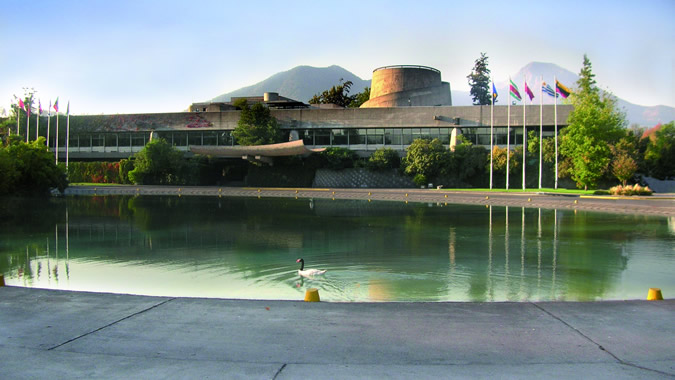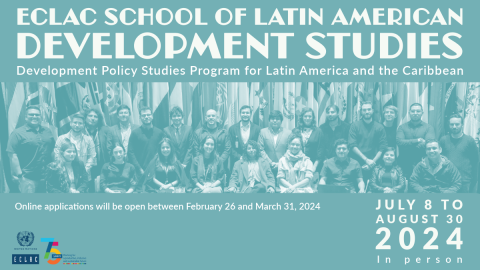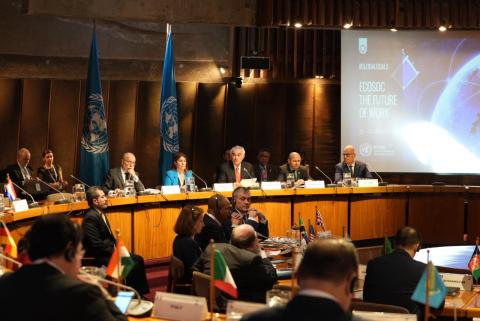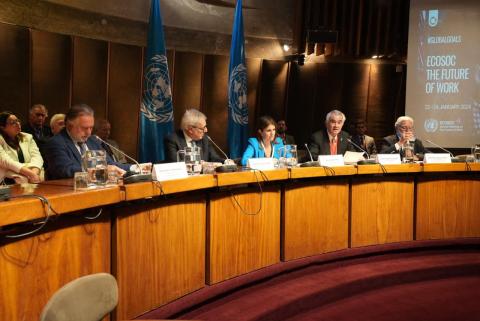Announcement
The United Nations Building in Santiago, the capital of Chile, which is the headquarters of the Economic Commission for Latin America and the Caribbean (ECLAC), celebrates its first half-century of existence today.
The edifice, inaugurated on August 29, 1966 by then Chilean President Eduardo Frei Montalva and United Nations Secretary-General, U Thant, is considered by experts to be a landmark of modern Latin American architecture.
Located in the district of Vitacura, in Santiago, this singular structure was inspired by the work of famed French architect Le Corbusier, with its exposed concrete, varying volumes and elements that allude to Latin American history and art. It is included on the watch list of the International Committee for Documentation and Conservation of Buildings, Sites and Neighbourhoods of the Modern Movement (DOCOMOMO) as the heritage of modern architecture due to its innovative design concepts and its structural model.
Designed by Chilean architect Emilio Duhart, in collaboration with Christian de Groote, Roberto Goycoolea and Oscar Santelices, the building is a great structure of reinforced concrete, simultaneously robust and lightweight, in which the main floor appears to be sustained by 28 columns.
The edifice stands out because of its integration with the Andes mountain range and the Mapocho river. Its grounds are completed by an oval pond and water features surrounded by gardens that attract aquatic birds and peacocks, where the Peace Bell (donated by the government of Costa Rica) is located, along with the flags of ECLAC’s 45 member States and 13 associate members, an enormous inverted tile made of concrete—which symbolizes the typical rooftops of Chilean houses—and the stamped handprints of the workers who participated in building the entrance walls.
Its most characteristic element is the Spiral located at the center of the building, in homage to pre-Columbian cultures, which holds inside it two circular meeting rooms that represent the equality of all member countries. Symbols engraved in concrete on the external walls of the Spiral narrate the history of the region.
“This building is an architectural landmark, but also a historical one. In the same way, ECLAC’s work and mission, which are profoundly rooted in its people and their land, endures over time … The building contemplates the region’s firm move towards longed-for economic independence and the consummation of the yearnings and hopes of their daughters and sons who, day by day, work to achieve their dreams … This house will continue to be a witness and protagonist of this transcendent process,” said Alicia Bárcena, ECLAC’s Executive Secretary.
In 2015, the iconic building was included in an exhibit at the Museum of Modern Art (MoMA) in New York dedicated to modern Latin American architecture. The show, entitled Latin America in Construction: Architecture 1955 – 1980, exhibited more than 500 works including photographs, drawings, blueprints and videos of constructions that are representative of modernism in the region, among which was a great mock-up of ECLAC’s main headquarters.
In addition, in October 2015, the building was one of the more than 300 monuments and other well-known places in 60 countries throughout the world that colored itself blue as part of a global campaign to celebrate the 70th anniversary of the United Nations.
ECLAC is one of the United Nations’ five regional commissions. It was founded in 1948 with the objective of contributing to the economic and social development of Latin America and the Caribbean and strengthening the relations of countries in the region, both among themselves and with other nations of the world.



